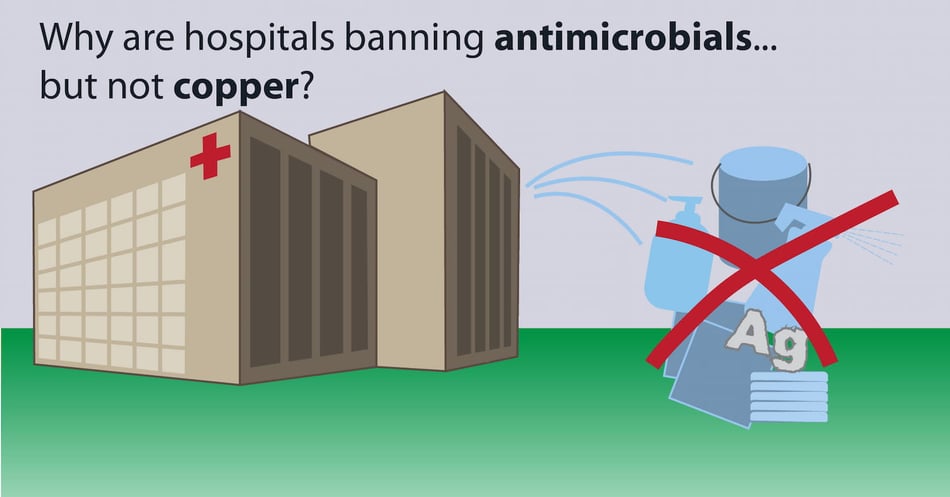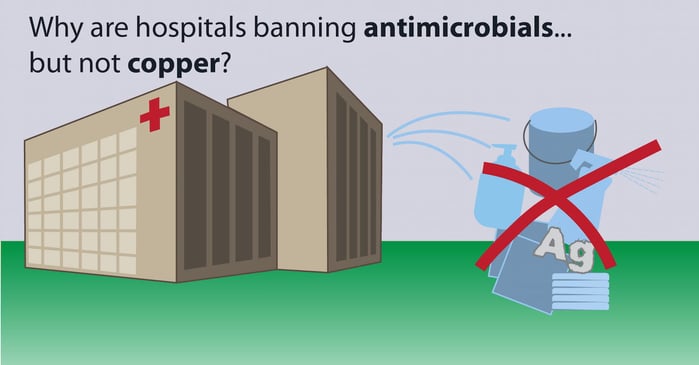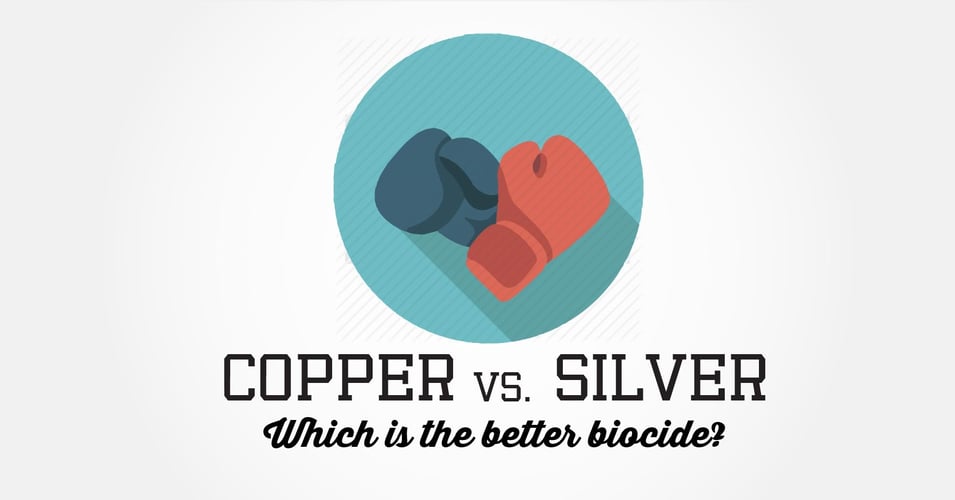Why are hospitals banning antimicrobials, but not copper?

 A few years ago, the first rumblings were starting over the use, and possible overuse, of antimicrobials in interior furnishings and materials. As Medicare pressures made the need for improved infection control practices become urgent to every hospital, materials manufacturers from flooring to ceiling tiles began producing new lines of “antimicrobial” products. Everything from paint to carpet to caulk to privacy curtains suddenly were infused with chemicals purporting to give these materials antimicrobial properties. But as researchers began to look into the effect of these products, one thing became clear: There is little to no evidence that these chemical additives have a positive impact on infection, and may in fact present a risk to the health of hospitals staff and patients. But one type of product was singled out as specifically not being banned: The use of copper-infused materials. First, why are these hospitals banning antimicrobials? And second, why are they specifically not banning copper?
A few years ago, the first rumblings were starting over the use, and possible overuse, of antimicrobials in interior furnishings and materials. As Medicare pressures made the need for improved infection control practices become urgent to every hospital, materials manufacturers from flooring to ceiling tiles began producing new lines of “antimicrobial” products. Everything from paint to carpet to caulk to privacy curtains suddenly were infused with chemicals purporting to give these materials antimicrobial properties. But as researchers began to look into the effect of these products, one thing became clear: There is little to no evidence that these chemical additives have a positive impact on infection, and may in fact present a risk to the health of hospitals staff and patients. But one type of product was singled out as specifically not being banned: The use of copper-infused materials. First, why are these hospitals banning antimicrobials? And second, why are they specifically not banning copper?
Led by healthcare giant Kaiser Permanente, a movement to ban unproven and unsafe chemical additives to hospital interiors has gained traction. The Safer Chemical Challenge and other initiatives urge hospitals to pledge to stop purchasing unproven antimicrobials. What are these antimicrobials?
According to the Safer Chemicals Challenge, one of the key aspects of reducing harm is the elimination of unnecessary or unproven chemicals to hospital interiors. The items they specify are:
- Formaldehyde
- Perfluorinated compounds
- Polyvinyl chloride (PVC)
- Antimicrobials (Triclosan and triclocarban explicitly prohibited)
- Flame retardants
Why antimicrobials?
Because the term itself is so broad as to include products that offer no real benefit to the user. The Safer Chemical Challenge urges hospitals to use only antimicrobials “that are registered with the U.S. EPA under the Federal Insecticide, Fungicide, and Rodenticide Act (FIFRA), and have published data that shows efficacy in a hospital/clinical setting measured by a reduction in healthcare-associated infections (HAIs) as part of comprehensive infection control measures.” What does this mean?
- The antimicrobial must be registered with EPA
- The antimicrobial must be proven to reduce HAIs in a real-world setting
What are some of the products that fall under the category of “antimicrobials?
There are many chemical additives that are considered antibacterial, antifungal, bacteriostatic, fungistatic, and even microbiocidal that do not meet both of the above conditions, EPA registration and clinical data. These include additives to paints, adhesives, sealants, plastics, ceramics, furniture, textiles, and even flooring and ceiling tiles.
Silver in its many forms (nanosilver, silver ions, silver zinc zeolites, silver sodium hydrogen zirconium phosphate) also does not meet the requirements set by the Safer Chemical Challenge, leading health systems such as Kaiser Permanente, and a growing number of other hospitals to ban it.
So why is copper specifically not banned?
Copper is becoming a well-known biocide, with copper alloy fixtures and sheets as well as copper-infused surfaces (EOSCU being the sole copper-infused surface) demonstrating clinical and real-world efficacy against Gram-positive and Gram-negative bacteria. Copper and EOSCU are also registered with the EPA for public health claims. Therefore, copper and copper-infused EOSCU meet the two requirements under the Safer Chemical Challenge and are not banned by Kaiser Permanente or any other health system or hospital.
In addition to meeting the requirements of the Safer Chemical Challenge, copper has no deleterious effects on people or the environment. As we said earlier in the week, copper is an essential metal. It is required by the human body for several key functions, and our bodies are well-equipped to process and use copper. .
In a marketplace flooded by products touted as “antimicrobial,” it is difficult to trust what you hear. If even a healthcare giant like Kaiser Permanente has to stop and examine the proof behind the words, it is understandable that we all should consider doing the same. When it comes to recommending a product as something that a hospital can expect – and trust – to help them fight infections and protect their patients, the stakes could not be higher.
Editor's Note: This post was originally published in March 2016 and has been updated for freshness, accuracy and comprehensiveness.
![EOScu Logo - Dark - Outlined [07182023]-01](https://blog.eoscu.com/hubfs/Eoscu_June2024/Images/EOScu%20Logo%20-%20Dark%20-%20Outlined%20%5B07182023%5D-01.svg)





